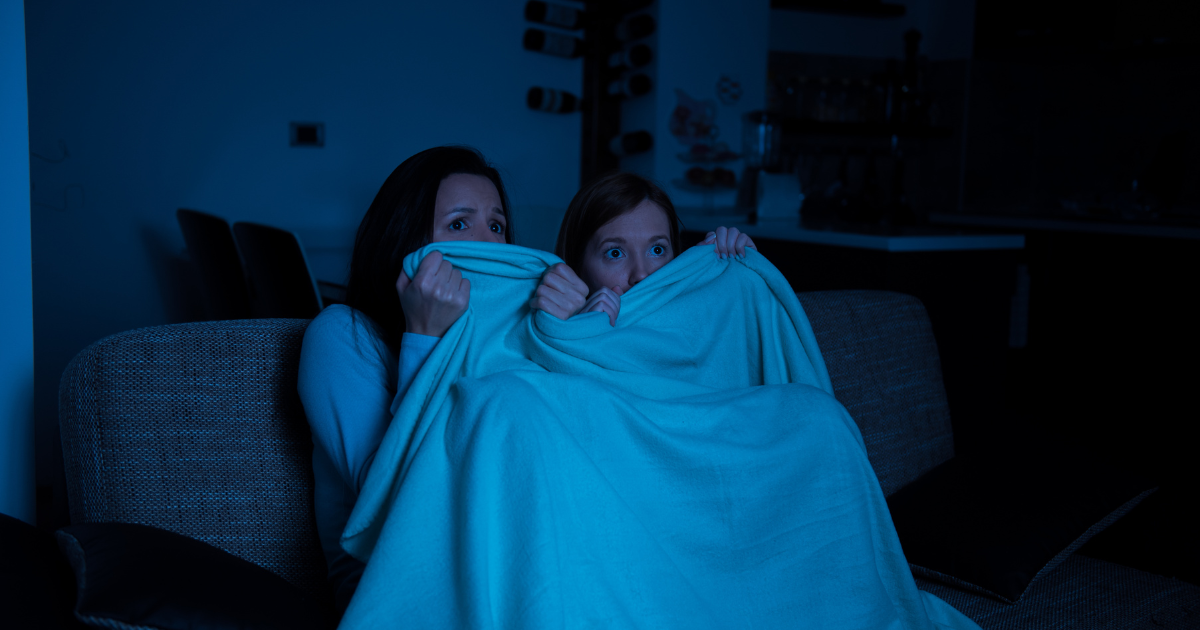The Brain And Horror: Why Some Love the Fear and Others Flee It
The appeal of horror films has fascinated psychologists and neuroscientists for decades. Science suggests that people enjoy horror for a mix of reasons. Here are some of the mechanisms at play:
Psychological arousal:
Horror movies activate our ‘fight or flight’ response, increasing the heart rate, speeding up breathing, and increasing arousal. This adrenaline rush can be thrilling in a safe environment like the cinema or the sofa, where the danger can be experienced without the risk.
But for others who have a stronger reaction, a racing heart, sweaty palms, and adrenaline surges can feel really unpleasant.
The Brain & Reward System
Brain imaging shows that horror activates both the amygdala (fear processing) and the dopaminergic (reward) system of the brain. For some, the overlap between fear and pleasure systems makes scary movies feel exhilarating rather than distressing.
Excitation transfer:
The ‘excitation transfer theory’ suggests that the heightened arousal from fear can intensify positive emotions afterwards, like relief or laughter after the danger has passed, and fear can then be interpreted as enjoyment.
For non-fans of horror, with poor excitation transfer, the relief does not outweigh the stress. The lingering arousal feels like tension without payoff.
Psychological traits:
Some people are high sensation seekers and enjoy intense, novel or risky experiences, including horror. Personality factors like openness to experience, low empathy, or dark traits (like morbid curiosity) can also predict enjoyment of horror.
Interestingly, people with higher levels of trait anxiety may avoid horror, while those who like managing fear may find it empowering.
Personality & Temperament
Low sensation-seeking individuals dislike overstimulation and avoid scary or intense experiences. People with high empathy may find violence or suffering in horror films too distressing. Those with trait anxiety or who are prone to worry may find horror overwhelming or destabilizing.
Learning & Coping
Horror offers a “safe rehearsal” of threats, you can learn how to respond to danger without real consequences. Watching horror can help people build emotional resilience and practise coping strategies for stress and uncertainty. Some studies suggest that during stressful times, such as the Covid pandemic, horror viewing may support psychological preparedness.
Social & Cultural Factors
Horror films are often communal experiences: people bond over shared scares, nervous laughter, or post-movie discussions. Culturally, horror invites people to confront taboo subjects like death, violence, and the unknown, things that society often pushes aside in daily life Some argue horror provides catharsis, an emotional release of fear and anxiety.
Cognitive Style
Some people can get lost in movies and find it difficult to separate fiction from reality as easily. This means that the horror feels too real and lacks the psychological “safety buffer.” Others may dislike ambiguity or lack of control, both of which horror thrives on.
Negative Past Associations
A traumatic experience (getting scared badly as a child, associating darkness with danger, etc.) can make horror feel aversive rather than fun. Cultural or religious beliefs may also frame horror as morbid, unhealthy, or taboo, reducing enjoyment.
In short:
People like horror films because they provide controlled fear, trigger adrenaline and dopamine, let us safely explore danger, strengthen social bonds, and satisfy curiosity about the dark side of human existence.
People who dislike horror experience the same fear and arousal as fans, but they interpret it differently, as anxiety, disgust, or overstimulation instead of excitement.
Where do you sit with horror films; on the sofa, or behind it?

